Anker Solix F3800 home battery backup review: pushing the limits of portable power
Just announced at CES, the new Anker Solix F3800 offers incredible capacity and expansion opportunities for anyone looking to reduce their reliance on the city's electrical grid -- and we've had one for a few weeks.
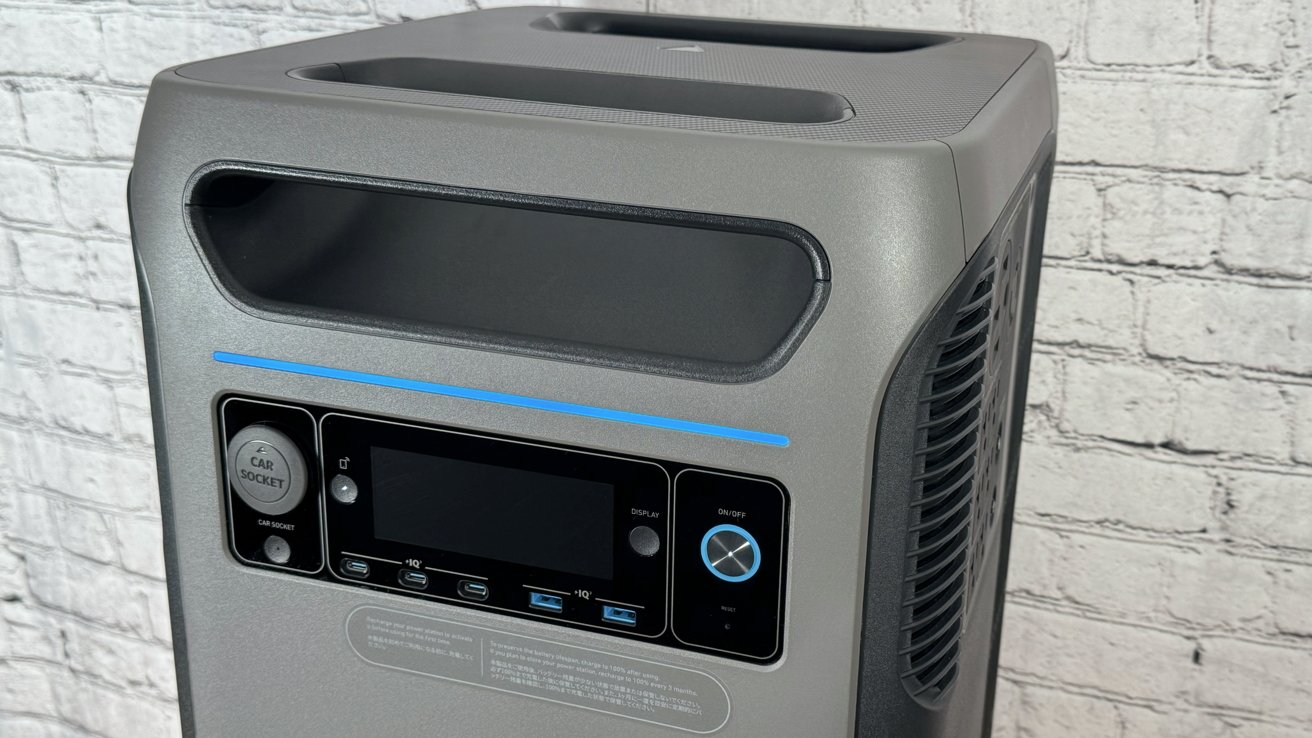
Anker Solix F3800
Anker's latest home battery backup solution sits at an interesting crossroads for customers. We wouldn't recommend Anker Solix F3800 for first-time portable power station buyers unless they know exactly what they want or have deep pockets.
Instead, we see Anker Solix as step one of many to achieving a whole-home backup solution. It works well enough on its own for powering devices for hours or days but ultimately works best as part of a bigger home backup unit or for RV power.
Anker Solix is incredibly expandable, similar to a Bluetti home backup station we've recently reviewed. The two systems take different approaches to improve portability and expansion -- wheels on Anker versus a separate inverter for Bluetti.
Access to electricity is vital, so everyone should consider investing in some kind of power backup solution. Companies like Anker offer many options, from beverage cooler-sized batteries to densely packed towers like the one in this review.
The Anker Solix F3800 is a good entry point for those seeking to expand into whole-home energy backup and storage. Add expansion batteries, a direct home panel connection, and solar panels to reduce or remove reliance on the power grid.
Anker Solix F3800 home battery backup review -- design
Anyone familiar with Anker should know the company has a particular design philosophy. The Anker Solix F3800 showcases that design with its big gray faceplate, blue LED highlights, and quality-of-life features like wheels and handles.
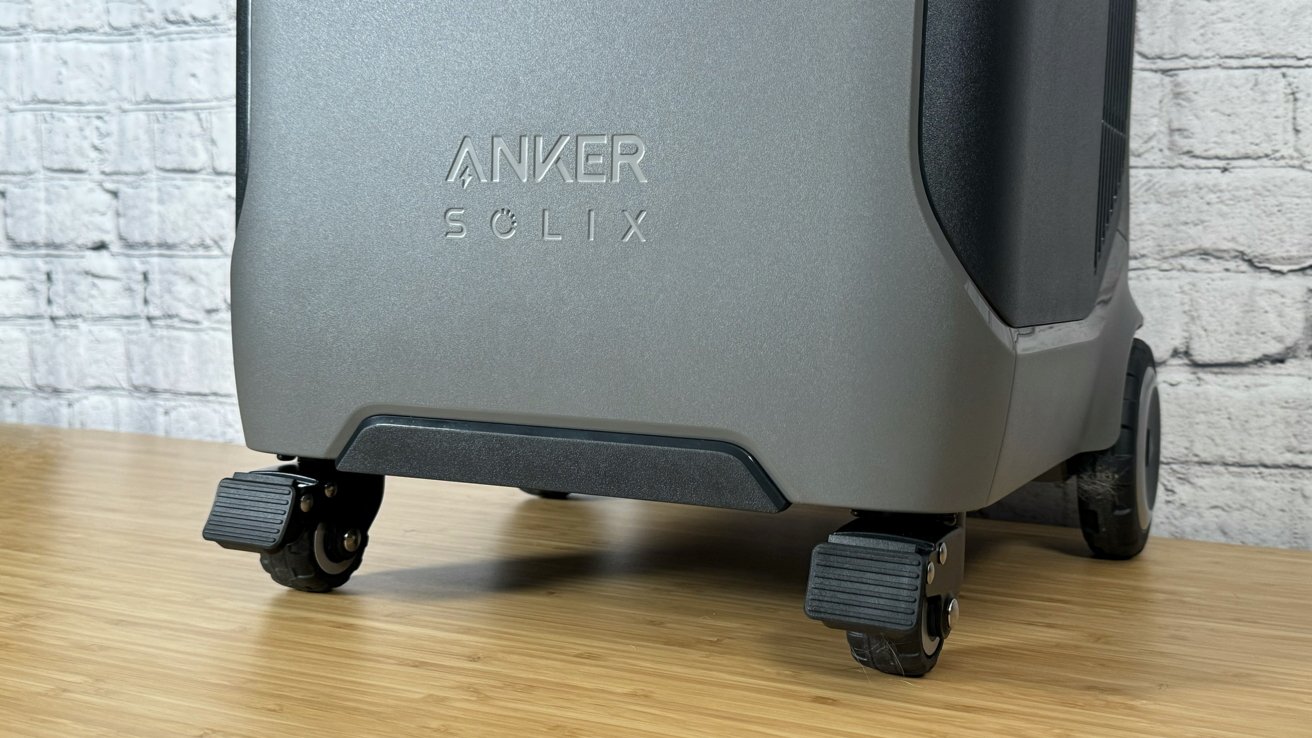
We will always appreciate wheels on a giant battery
Power stations are heavy thanks to densely packed battery cells, but Anker Solix F3800 is the heaviest single-unit product we've ever tested. It weighs 132.3 pounds.
For reference, most of the large battery units weigh around 75 pounds. That size and weight translate directly to capacity, and Solix F3800 has plenty of it.
It is 27.6 inches tall, 15.3 inches wide, and 15.6 inches deep. That's equivalent in height to a mini fridge but the width and depth of a small drink cooler.
An extendable handle lets you pull the battery like a very heavy suitcase. This takes some practice, as 132 pounds isn't exactly a maneuverable weight.
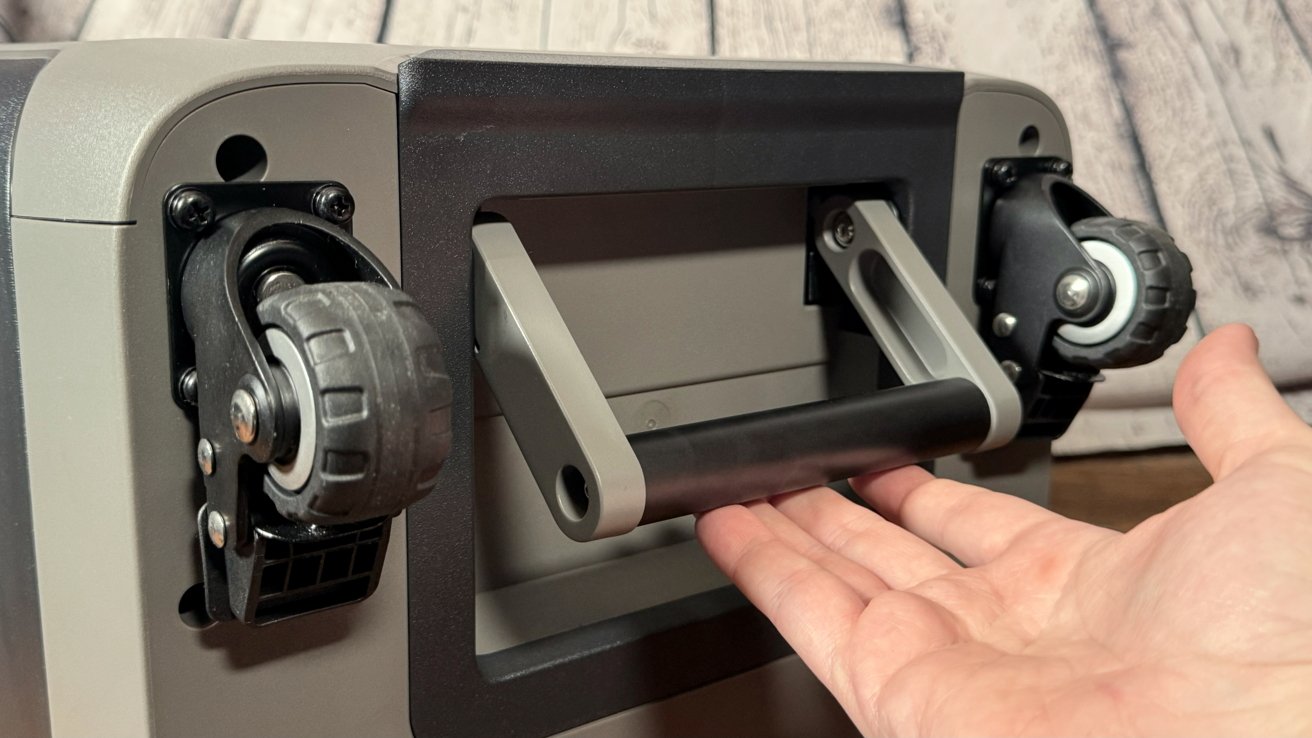
Find a handle underneath for easier lifting
There are four wheels -- two small swivel wheels and two large rear wheels. You'll be able to pull it across an even plot of grass, but nothing more rugged than that.
Thankfully, Anker has thought of a way to carry the Solix F3800 without throwing your back, or better yet, with two people. Laying the battery flat on its back exposes a handle in the bottom that folds out for easier carrying.
Ports
Home backup solutions and portable power stations like Anker Solix F3800 are crammed with ports. These ports aren't so useful if the unit is acting as a home backup solution, but they certainly come in handy for portable power station use.
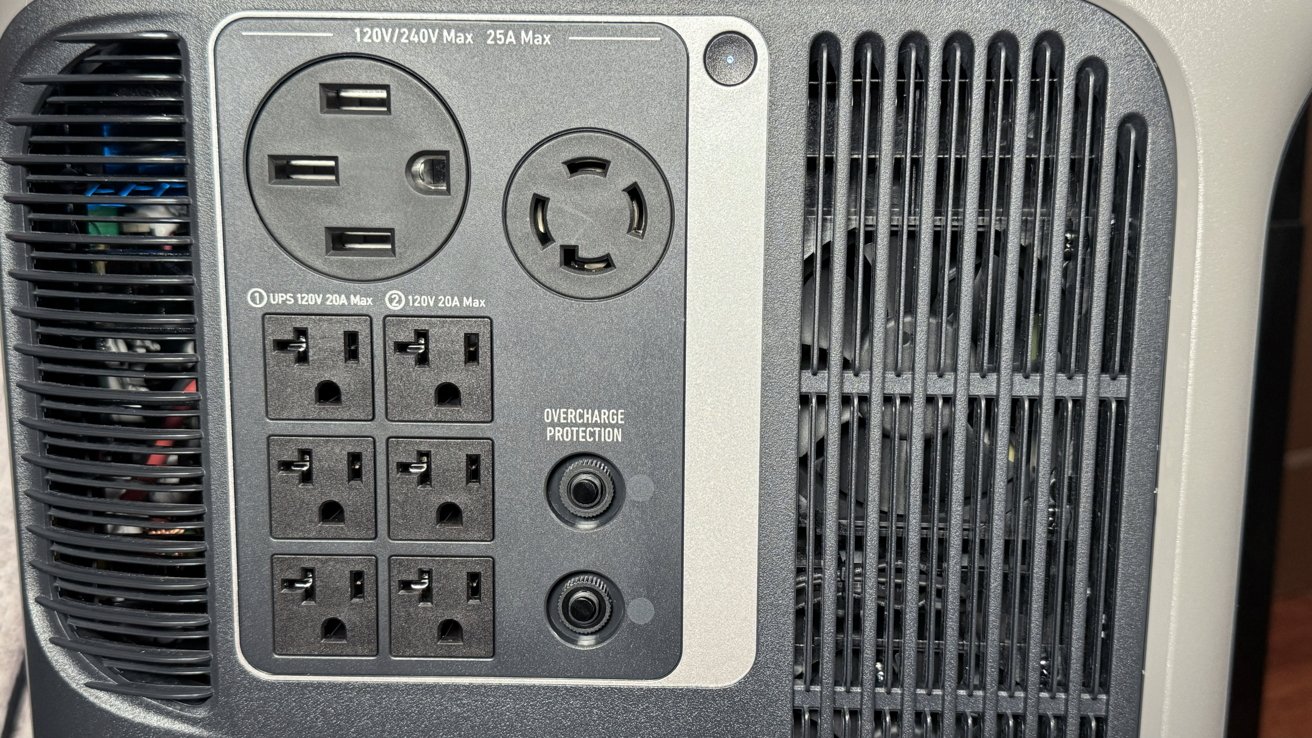
Anker Solix F3800 has plenty of output options
The Anker Solix F3800 has the following outputs:
- 3 100W USB-C
- 2 12W USB-A
- 6 AC outlets
- NEMA 14-50 AC
- NEMA L14-30R AC
- Car socket
The three AC outlets on the left work as uninterruptible power supplies with less than 20ms to switch. Vital loads that need fast switching should be connected to these outlets.
Inputs include standard 1,800W AC, two solar inputs up to 1,200W each, a port for the expansion battery, and a port for the home panel.
Anker Solix F3800 home battery backup review -- features
Anker Solix F3800 has a capacity of 3,840Wh with a maximum output of 6,000W. it supports 120V and 240V dual voltage output.
In case of a high load surge, it has a 9,000W surge peak.
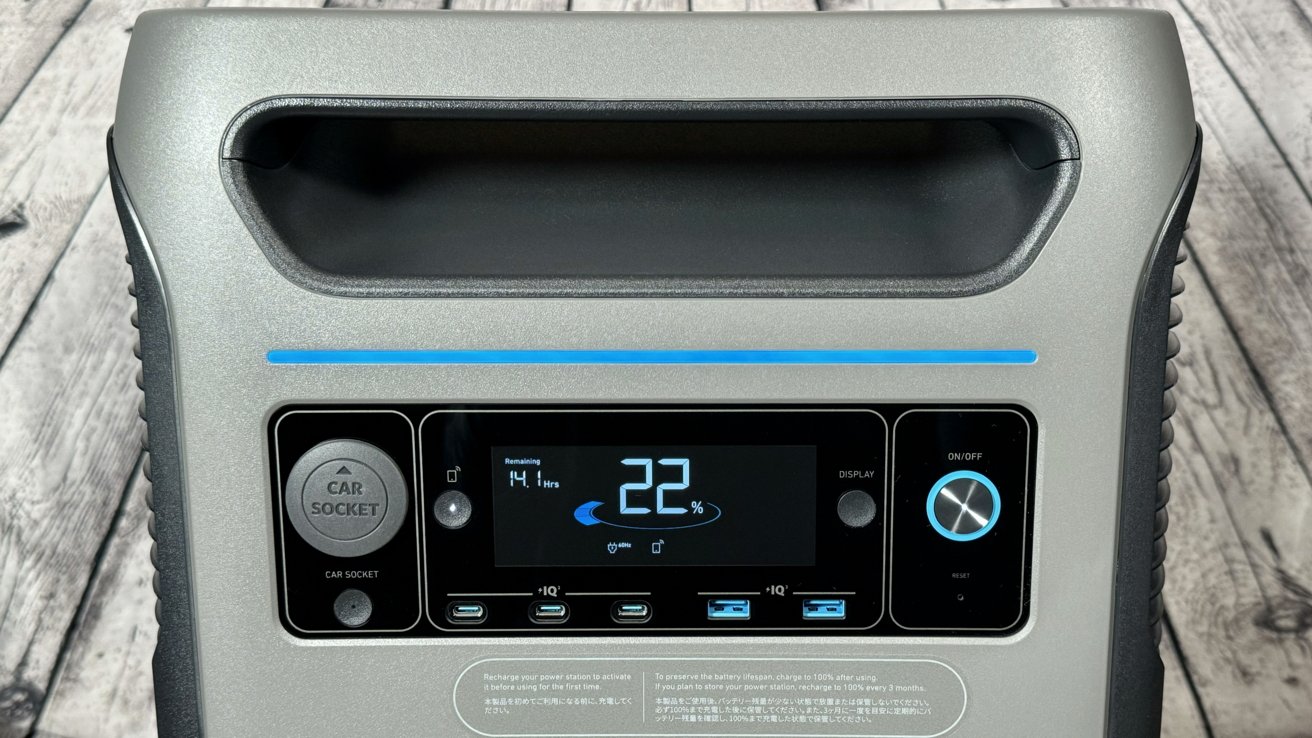
Run appliances and equipment for hours or days depending on wattage
Customers can connect another F3800 to double the output to 12,000W. Attaching additional expansions with the BP3800 allows up to 53.8kWh -- that's double Bluetti's AC300 & B300 total expandability.
The inclusion of two large NEMA outlets means users can power their RV or EV directly from Anker Solix F3800.
If the unit is connected to the home through a smart panel, customers can control exactly how power is used throughout the day. Pass AC power through to connected loads while simultaneously charging the battery with solar, then switch to the stored power when grid power is more expensive or less green.
Anker claims that the 3,800Wh capacity is enough to power a home for an entire day. That's based on what a family uses during emergencies like blackouts, not normal use with every appliance running.
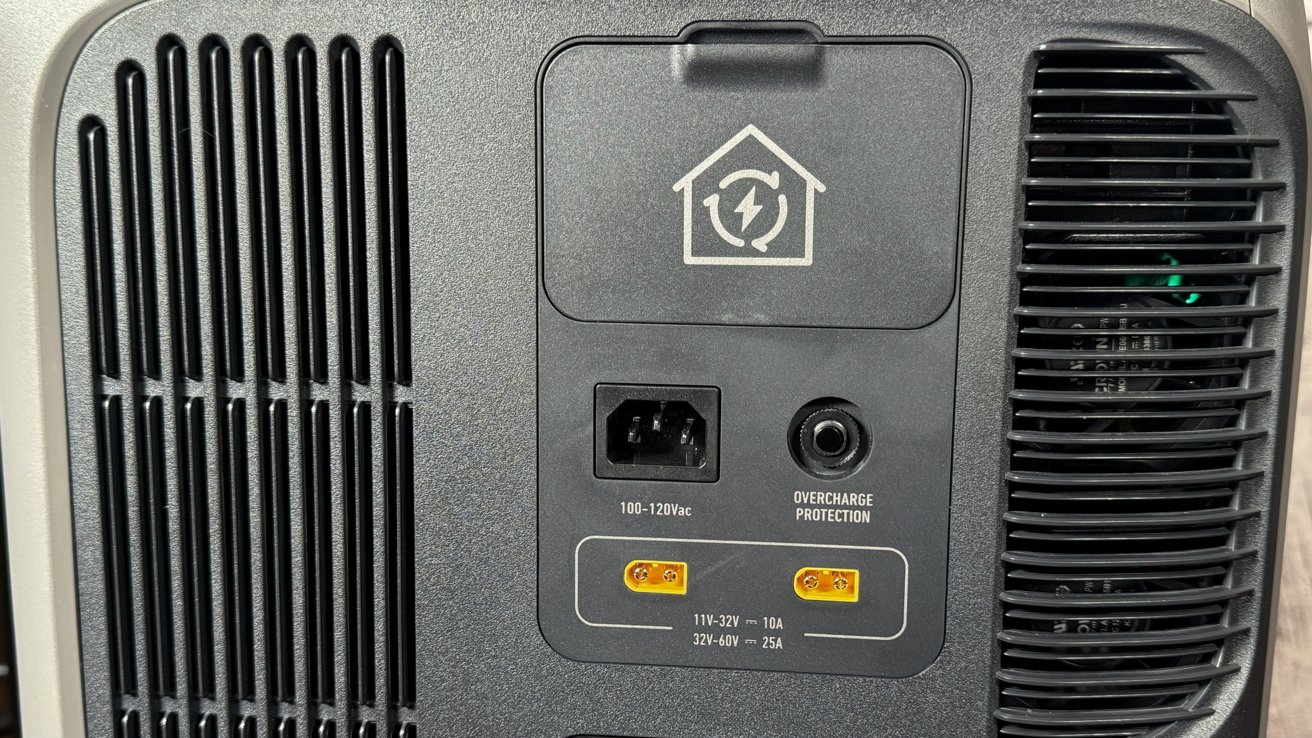
Inputs for AC, solar, expansion, and home connection
Of course, that one day can be expanded into a week's worth of power if you're willing to upgrade to the 53.8kWh system. Solar adds to that time by providing up to 2,400W in ideal conditions.
With a maxed-out Anker Solix system, we expect a user could reduce their reliance on the grid to negligible amounts. How much or how little the grid is needed will depend on location, weather, and other factors.
Using the Anker Solix F3800 home battery backup system
Power stations like the Anker Solix F3800 operate similarly to others in the category. Recent models tend to all use the same LFP chemistry with 3,000 charging cycles, have plenty of ports, and use fans for cooling.
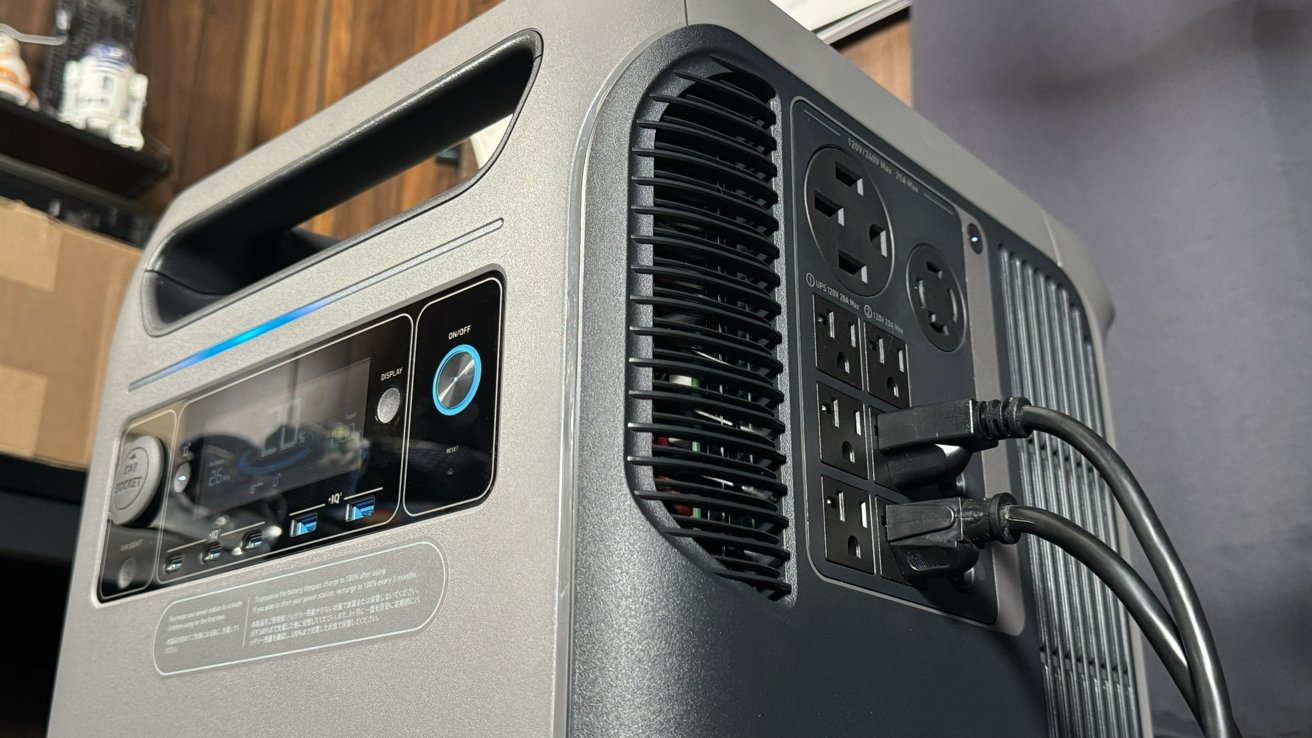
AC outputs include three UPS outlets
What sets each of these batteries apart is the overall construction and design. There's some factor in the quality of the battery itself, but that hasn't been an issue yet, as the ones we've tested seem to perform within the specs offered by the respective companies.
As part of our testing, we plugged in our desk's power strip one day at the start of the shift. The standing desk motor, monitor, iPads, phone charger, AirPods charger, router, and HomePod were powered by the Anker Solix F3800.
At 100% capacity, the battery estimated that it would last a little over a day with that consistent load. The load jumped to 400W when operating the standing desk but otherwise remained around 80W.
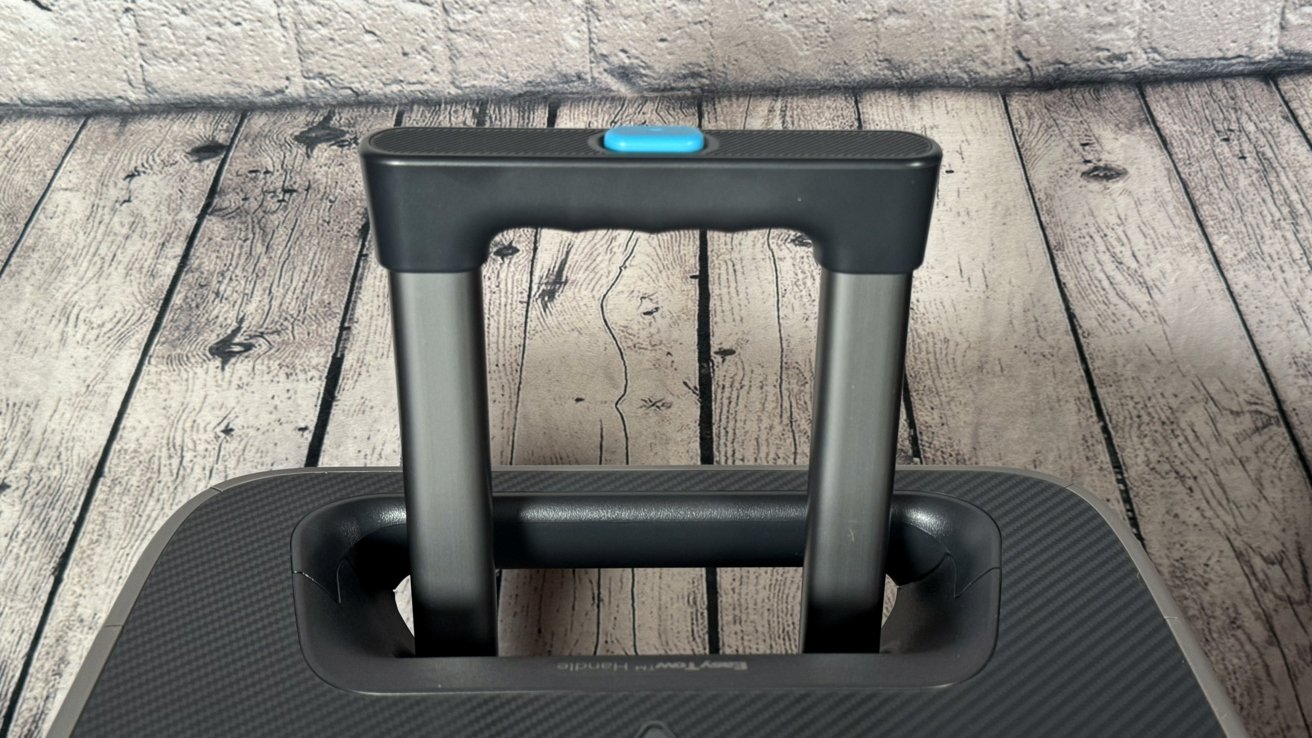
The suitcase handle makes it easy to move the battery around
The battery produced between 50 decibels and 60 decibels when the fans engaged. Otherwise, the battery was inaudible.
We didn't power the battery off completely overnight, so it kept powering the connected devices like the HomePod. It was at 40% when we returned to work the next day.
There's not a lot to say about actually using the battery. It powers on, charges, discharges, and lives up to being a portable power station thanks to its handles and wheels.
What stands out is Anker's overall design, port placement, quiet operation, and expandability. The app is also a well-made tool, if a bit utilitarian.
The Anker app
Anker's app is simple, with a section that displays connected devices. The app lets you control power cycles if you have home equipment like the home panel and solar.
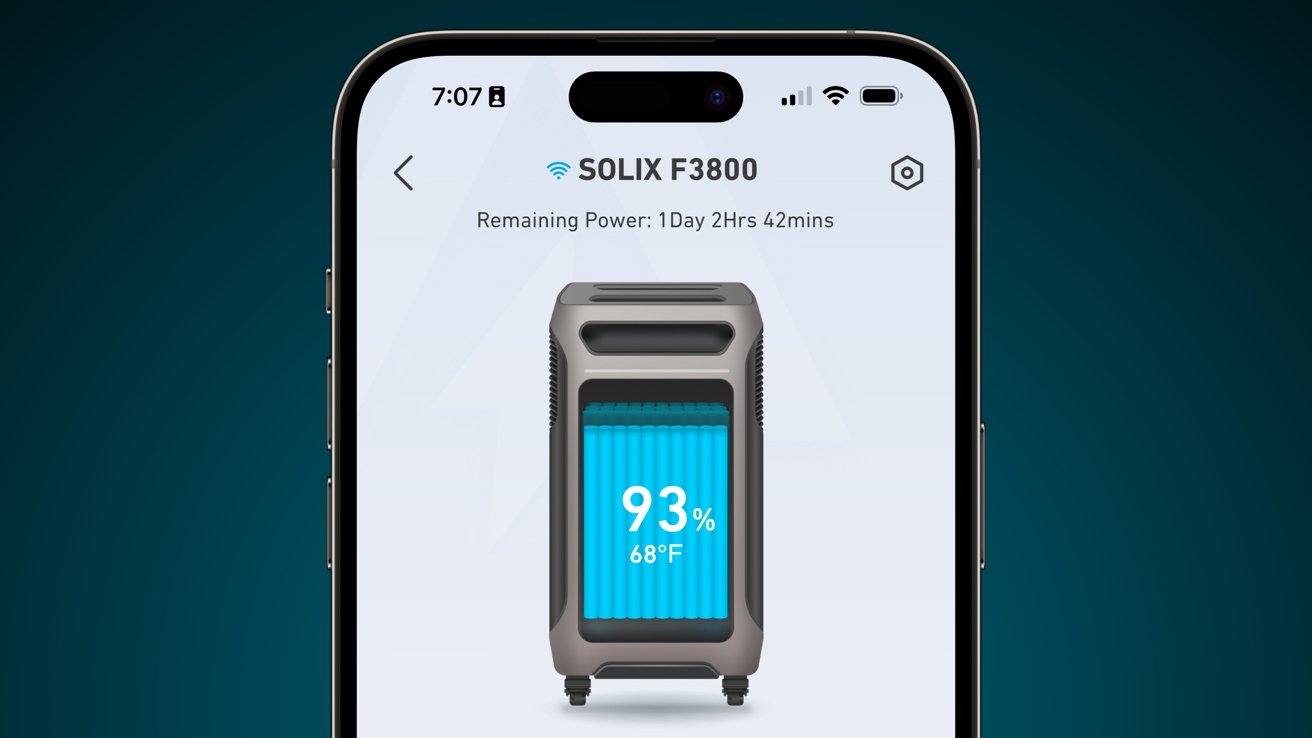
Anker's app is simple until you add more devices like solar
Without that advanced equipment, the app serves as a straightforward interface for the Anker Solix F3800. Tap in to see inputs, outputs, and how long the battery can run, given the current load.
Users can toggle power or set a timer to shut it off. The settings menu provides access to AC charging speeds, device timeout settings, and other basic controls.
Home battery backup, wheels included
Anker Solix F3800 works as a portable station when necessary but shines as a home backup solution. It can be expanded to offer days of power for any home and reduce the user's reliance on grid power.
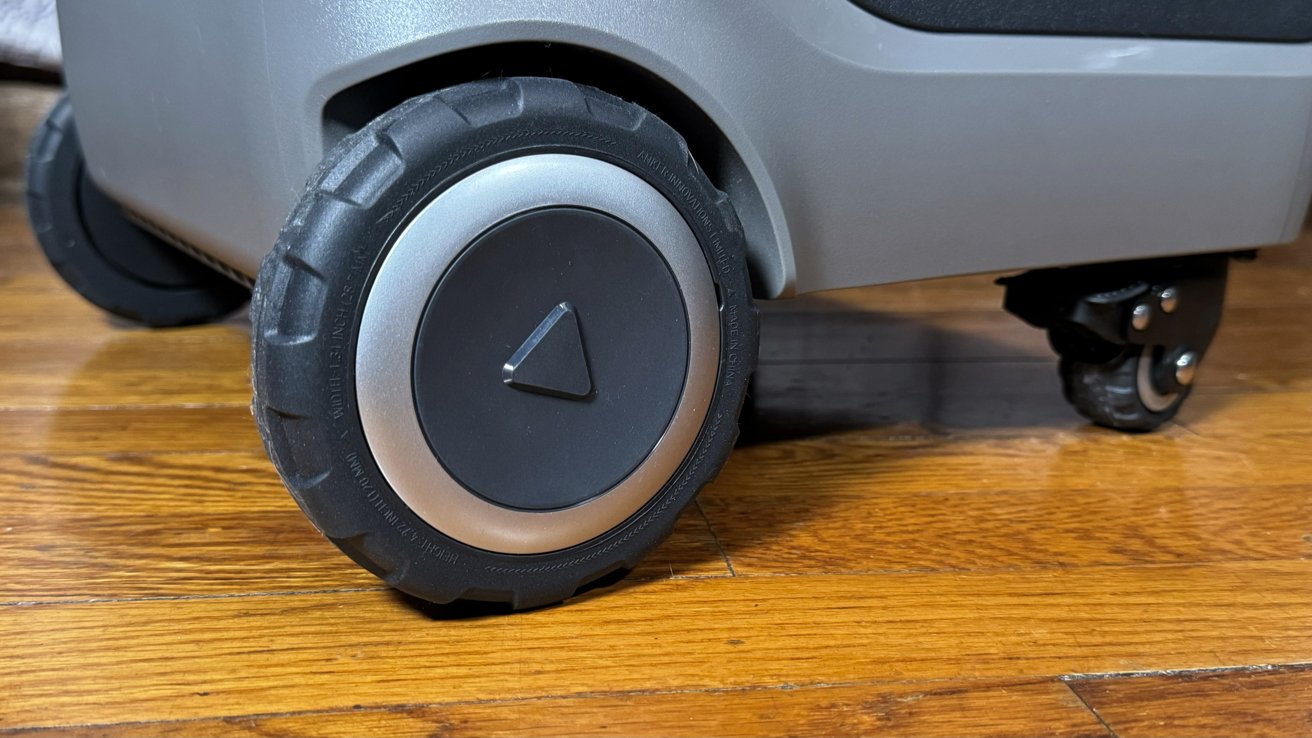
Even if 132 pounds is almost too heavy, good wheels make up for it
Smart design choices like an additional carry handle, large rear wheels, and port arrangement make it an excellent overall product. There are better entry portable power stations for those wishing to dabble in the space, but Anker Solix F3800 is a good choice for those seeking home power backup solutions.
Anker Solix F3800 home battery backup - Pros
- Expand all the way to 53.8kWh
- Up to 2,400W of potential input for fast charging
- Dual 120V/240V output
- Plenty of outlets with RV and EV connections
- Wheels and handles make up for the incredible weight, at least a little
Anker Solix F3800 home battery backup - Cons
- Heavy enough to be a problem
- Could fit in a large RV, but more suited for homes despite the outlets
Rating: 4.5 out of 5
Anker has a great power station with a good balance of ports and features. The size, weight, and cost of this battery pushes the score down from the ideal.
It may be unfair to Anker, but physics is the limiting factor in giving this product 5 out of 5. Simply put, we believe a perfect product in this category would nail a capacity-to-weight ratio, and this leans too heavy.
Where to buy the Anker Solix F3800 home battery backup system
The new home battery backup system was revealed during CES 2024, so it's a fresh addition to the Anker family. Get Anker Solix F3800 direct from Anker for $3,999. Launch deals can land a discount on the individual battery or combos.
AppleInsider is at the 2024 Consumer Electronics Show this week until January 12, with our reporters seeing the latest HomeKit devices, Apple accessories, 8K monitors, massive televisions, and more in-person throughout the event. You can keep up with the event's coverage on the AppleInsider app, our YouTube channel, on Facebook, and our X @AppleInsider account for the latest news as it breaks. Also, check out our official Instagram account for exclusive photos and videos throughout the event.
Read on AppleInsider

Comments
Holding out for $500 per kWH installed. Looking for 30 kWH battery storage and at least 12 kW output, about $15k installed. Also need another 4 kW of solar PV, which would add $10k to the price. Like the LFP and iPhone apps. Will ask for quote to see how it all adds up.